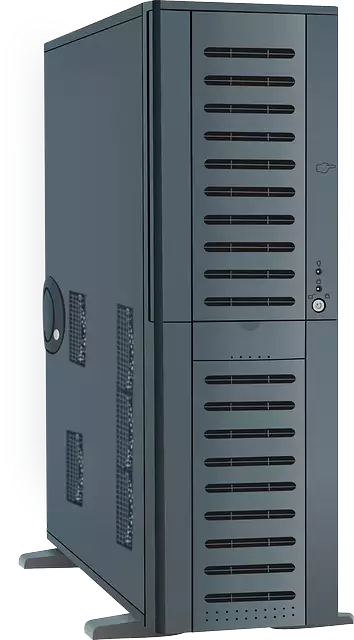Industrial ventilation systems are crucial for maintaining workplace air quality and worker safety by controlling contaminants and ensuring a healthy environment. Compliance with OSHA and other regulations is essential to prevent accidents and injuries. Regular testing and maintenance, including airflow rate checks, leak detection, and filter inspections, guarantee optimal performance, reducing health risks, enhancing productivity, and fostering a positive work environment through effective workplace air quality management.
Maintaining safe and efficient industrial ventilation systems is paramount for protecting maintenance workers from hazardous airborne contaminants. This article delves into the critical role of industrial ventilation systems in ensuring workplace air quality management. We explore ventilation safety standards, provide a comprehensive guide to testing protocols, and discuss common challenges and best practices for upholding optimal ventilation safety standards. By understanding these key aspects, professionals can safeguard workers and maintain healthy industrial environments.
- Understanding Industrial Ventilation Systems and Their Role in Workplace Safety
- The Importance of Workplace Air Quality Management for Maintenance Workers
- Ventilation Safety Standards: A Comprehensive Overview
- Testing Protocols for Ensuring Effective Ventilation Systems in Industries
- Common Challenges in Ventilation System Testing and Solutions
- Best Practices for Maintaining Optimal Ventilation Safety Standards
Understanding Industrial Ventilation Systems and Their Role in Workplace Safety
Industrial ventilation systems play a pivotal role in ensuring workplace air quality management and maintaining worker safety. These systems are designed to control and modify the air within an industrial environment, removing hazardous contaminants, noxious gases, and excessive heat or cold. By facilitating proper airflow, they create a safer, healthier workspace for employees, reducing the risk of respiratory issues, heat-related illnesses, and exposure to toxic substances.
Effective ventilation goes beyond basic comfort; it’s a critical component of occupational health and safety standards. Compliance with ventilation safety standards, such as those set by OSHA (Occupational Safety and Health Administration), is essential to prevent accidents and injuries. Regular testing and maintenance of these systems are crucial steps in upholding these standards, ensuring optimal performance, and safeguarding the well-being of workers across various industries.
The Importance of Workplace Air Quality Management for Maintenance Workers
Maintaining proper workplace air quality is of paramount importance for ensuring the safety and well-being of maintenance workers in industrial settings. Industrial ventilation systems play a crucial role in managing airborne contaminants, keeping hazardous fumes, dust, and gases at bay. By adhering to strict ventilation safety standards, organizations can create a healthier environment for their employees, reducing the risk of respiratory issues, chronic illnesses, and other health complications associated with poor air quality.
Effective workplace air quality management involves regular testing and maintenance of these systems. This includes verifying that industrial ventilation systems are adequately designed, installed, and functioning correctly. By implementing robust protocols, organizations can guarantee that maintenance workers are operating in a safe, breathable atmosphere, thereby enhancing productivity and fostering a positive work environment.
Ventilation Safety Standards: A Comprehensive Overview
Maintaining safe and healthy working conditions is paramount in any industry, especially when dealing with potentially hazardous environments. Ventilation systems play a crucial role in ensuring workplace air quality management, as they control and remove contaminants, ensuring a safe and comfortable atmosphere for workers. Industrial ventilation systems are designed to mitigate risks associated with poor air quality, such as toxic fumes, dust, and other airborne hazards.
Adherence to ventilation safety standards is essential to safeguard workers’ health and prevent accidents. These standards govern the design, installation, and maintenance of ventilation systems, ensuring they function optimally. Organizations like OSHA (Occupational Safety and Health Administration) provide comprehensive guidelines for workplace safety, including specific regulations for industrial ventilation. By adhering to these standards, companies can ensure their ventilation systems are not only effective but also meet legal requirements, fostering a culture of workplace safety and environmental stewardship.
Testing Protocols for Ensuring Effective Ventilation Systems in Industries
Testing protocols are essential components in ensuring effective industrial ventilation systems and maintaining workplace air quality management. Regular assessments should be conducted to verify the performance and efficiency of these systems, adhering to established ventilation safety standards. Such tests involve evaluating air flow rates, checking for proper ductwork connections, inspecting filters and fans for any damage or wear, and measuring carbon monoxide and other harmful gas levels within the workspace.
By implementing rigorous testing procedures, potential hazards can be identified and rectified early on. This proactive approach not only guarantees optimal ventilation but also promotes a safer working environment, reducing the risks associated with poor air quality and inadequate ventilation systems in industrial settings.
Common Challenges in Ventilation System Testing and Solutions
Ventilation system testing presents several common challenges that can impede effective workplace air quality management and worker safety. One significant hurdle is ensuring comprehensive coverage during inspections, as vast industrial ventilation systems with numerous components and control points demand meticulous attention to detail. To overcome this, professionals employ advanced monitoring tools like digital flow meters and carbon dioxide sensors to systematically assess every critical point within the system. Regular calibration of these devices is essential for accurate readings.
Another challenge lies in adhering to stringent ventilation safety standards while navigating complex regulatory landscapes. Maintaining compliance across diverse industrial settings necessitates a tailored approach. Implementing standardized testing protocols, documenting findings meticulously, and fostering continuous training among personnel can help streamline the process. Regular audits and peer reviews further ensure adherence to best practices, enhancing overall workplace air quality management and safeguarding worker well-being.
Best Practices for Maintaining Optimal Ventilation Safety Standards
Maintaining optimal ventilation safety standards is paramount for any industrial facility to ensure the well-being of its workers and adherence to regulatory guidelines. Best practices in workplace air quality management involve regular, comprehensive testing of industrial ventilation systems. This includes examining air flow rates, checking for leaks or blockages in ducts, and verifying that exhaust points are functioning correctly. It’s crucial to use calibrated instruments and follow a structured testing protocol to ensure accurate results.
Additionally, keeping detailed records of all tests, inspections, and maintenance activities is essential. These records should document any issues identified, the corrective actions taken, and the efficacy of those actions on overall ventilation safety. Regular training for staff involved in these processes ensures everyone understands their roles and the importance of maintaining a safe working environment through effective industrial ventilation systems.


